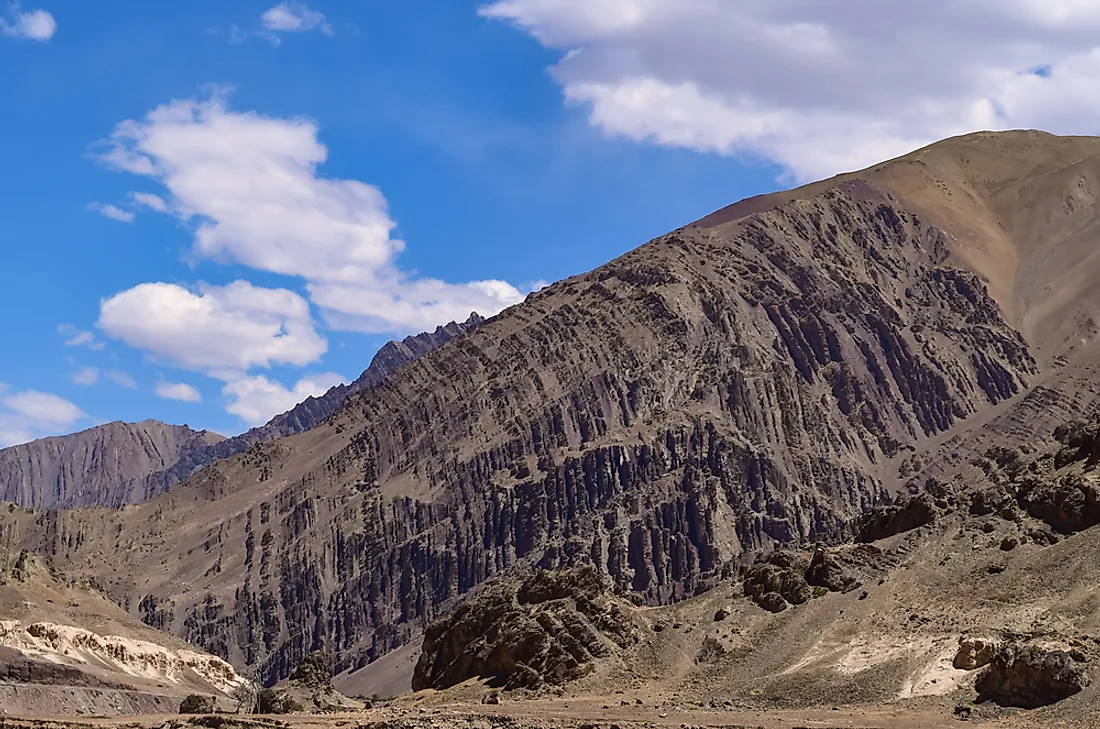What Is A Batholith?

A batholith is a giant mass of intrusive igneous rock that forms when magma collects and cools deep in the earth’s crust without being exposed to the surface. A batholith is usually larger than 40 square miles. The main composition of a batholith is coarse grained granite. Most of these giant structures formed inside mountain folds that have undergone faulting as this creates spaces that the magma can intrude into and form a new structure after cooling.
How Are Batholiths Formed?
A batholith is never a single structure but a mass of multiple plutons. A pluton is a body of intrusive igneous rock. First during the creation process, buoyant magma starts to rise up towards the surface and gains passage into cracks left behind by faulting activities or by simply melting down the surrounding native rocks. Owing to the great distance to the surface, this aqueous form of magma loses much of its heat and starts to cool down slowly, eventually solidifying underground. When a series of many plutons converge, they form a giant expanse of rock that is the batholith. Batholiths take the shape of a dome and remain hidden underground until erosion of the overlying layer exposes them to the surface. Some batholiths can be huge, extending to over 1,000 miles. Once a batholith is exposed to the surface, the difference in pressure causes it to start exfoliating by rapid expansion over time. This results in a clean and rounded rock surfaces that can be seen from miles around.
Characteristics Of A Batholith
Batholiths are huge and cover areas larger than 40 square miles, and some like the Coast Plutonic Complex in Western Canada extends to 1,118 miles. Batholiths consist predominantly of granite rocks which are coarse in texture due to the slow cooling process that rocks went through during the formation process. Batholiths tend to be formed near mountainous areas and continental margins due to the constant seismic shifts of the tectonic plates in those areas that create spaces for magma to intrude easily.
Examples Of Batholiths
In Africa there is the Aswan Granite batholith in Egypt, the Cape Coast batholith in Ghana, Darling batholith in South Africa, and the Mubende batholith in Uganda. The Antarctica area has two, the Antarctic Peninsula batholith and the Queen Maud batholith. In Asia there is the Angara Vitim batholith in Siberia, Karakorum batholith in Himalaya, the Bhongir Fort batholith in India, and the Tien Shan batholith in Central Asia. Batholiths in Europe include the Bindal, the Cornubian, the Corsica-Sardinian, the North Pennine batholith, the Trans-Scandinavian batholith among others. In North America there is the Idaho batholith, the Ruby Mountains, the famous Sierra Nevada batholith, the Wyoming batholith, the Stone Mountain, the British Virgin islands, the Boulder batholith among many others. The Oceania region has the Moruya batholith and the Kosciuszko batholith in Australia, and the Median batholith in New Zealand among others. In South America there is the Antioqua batholith in Colombia, the Illescas in Uruguay, and the Coastal batholith in Peru among many others.











